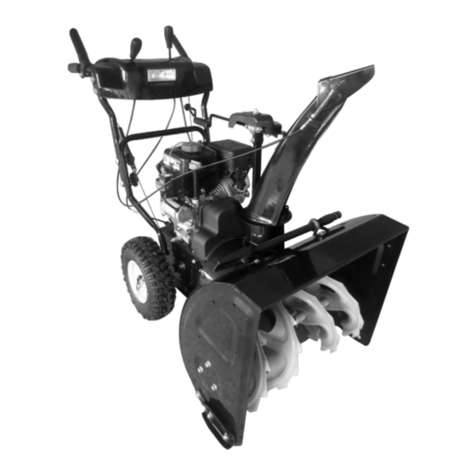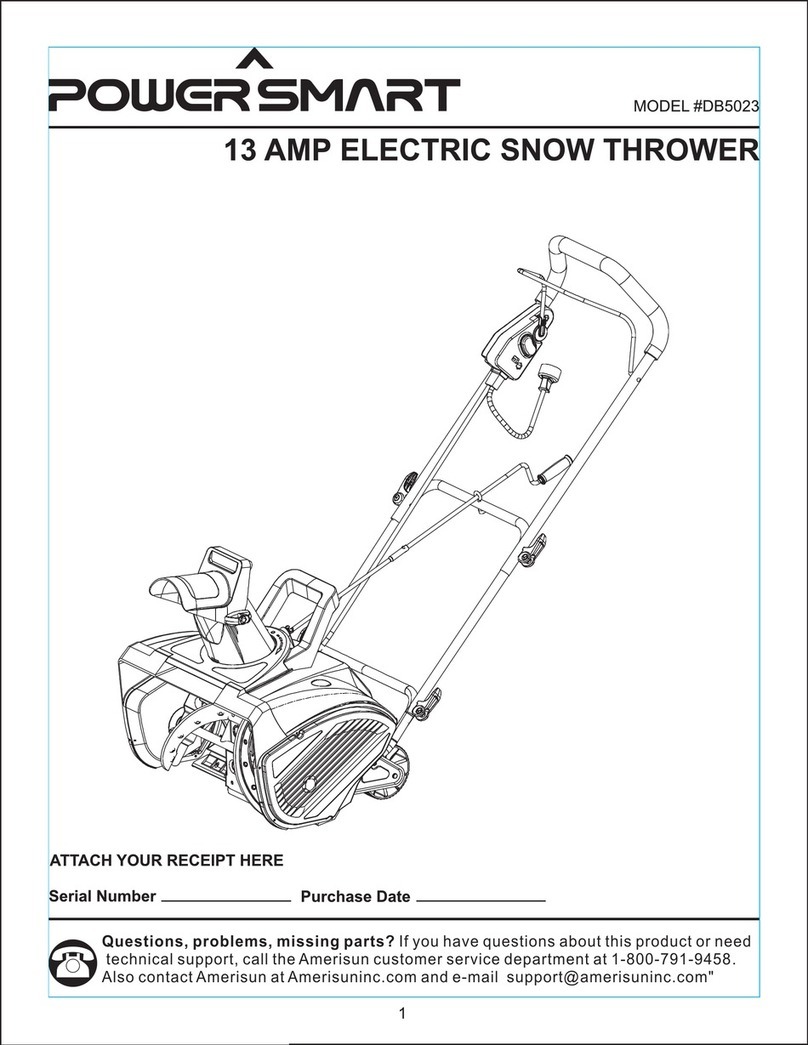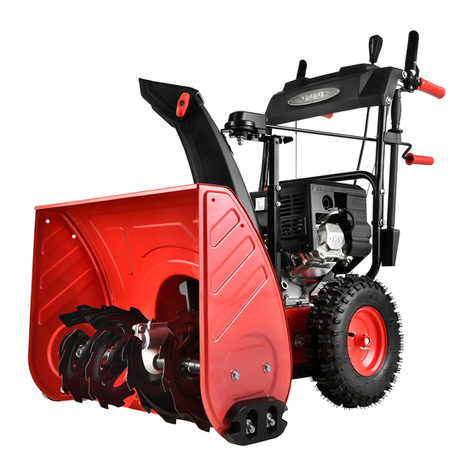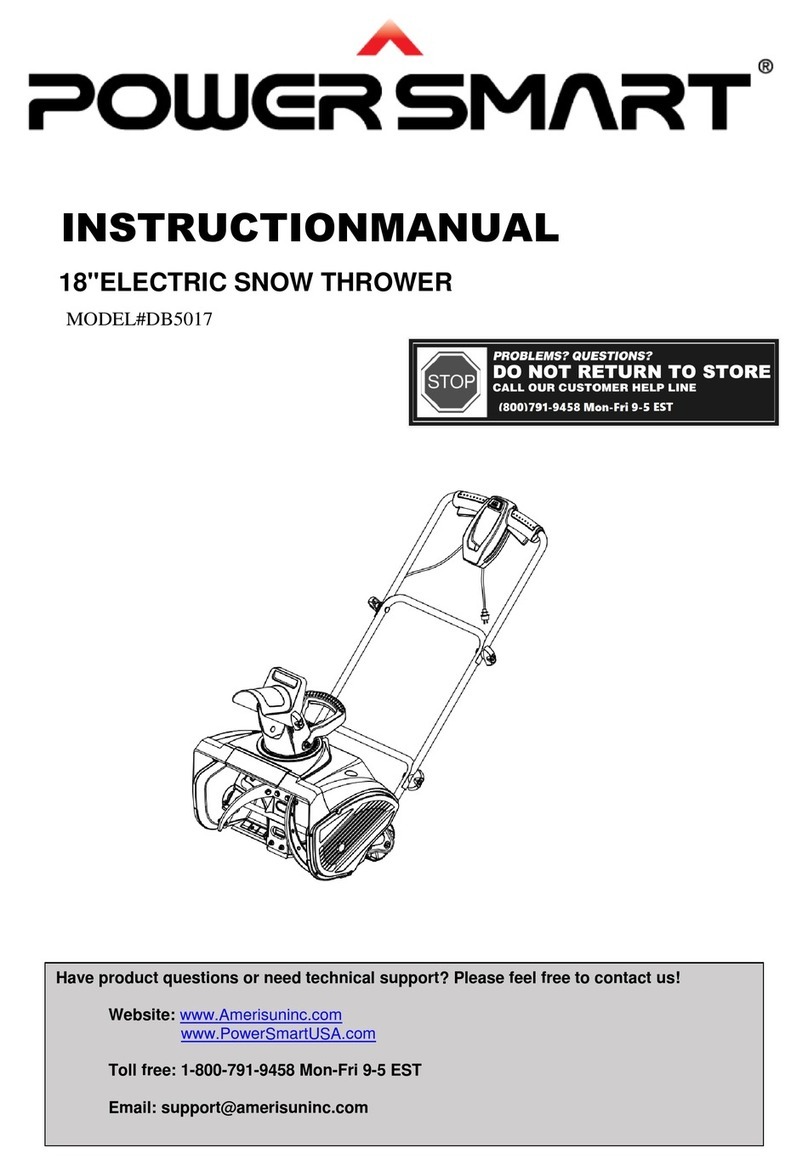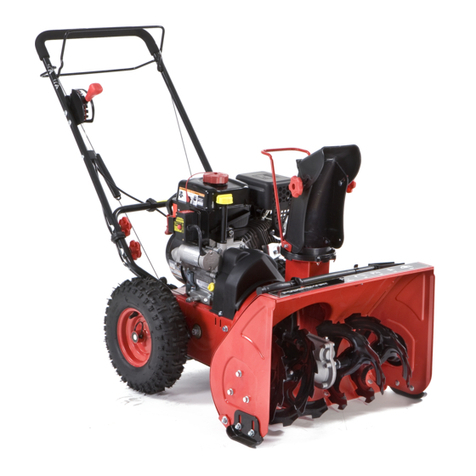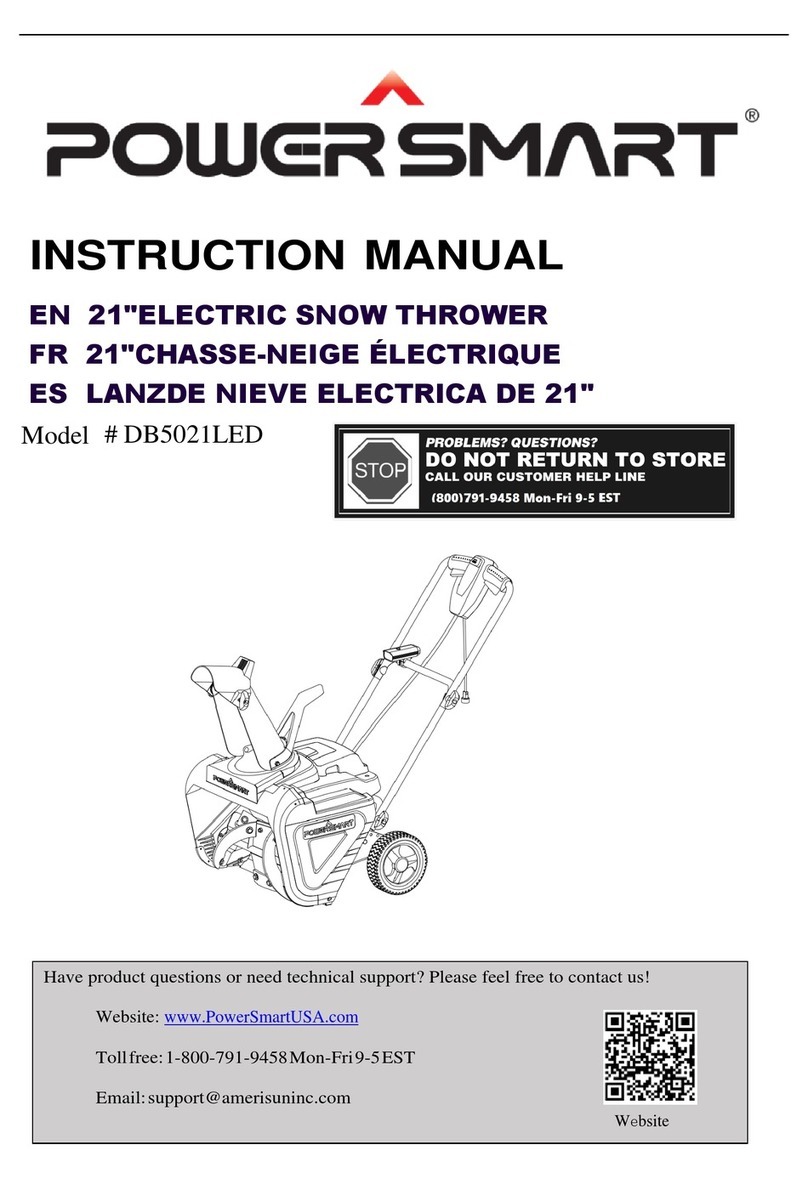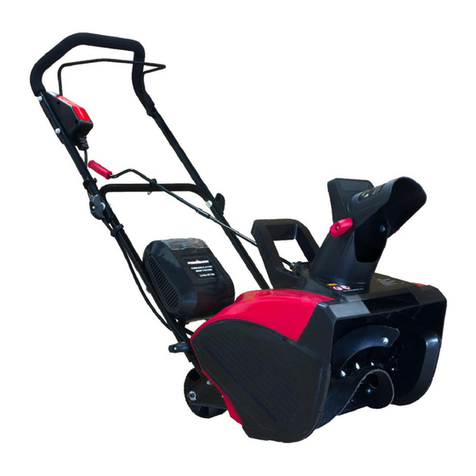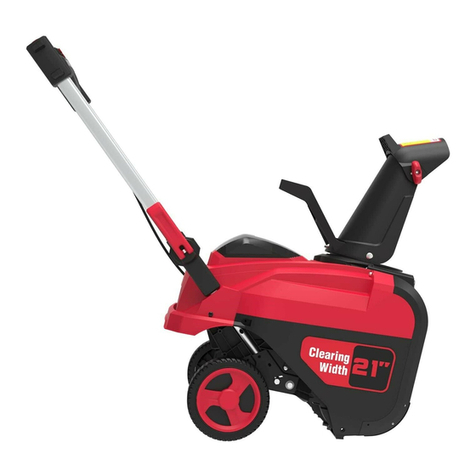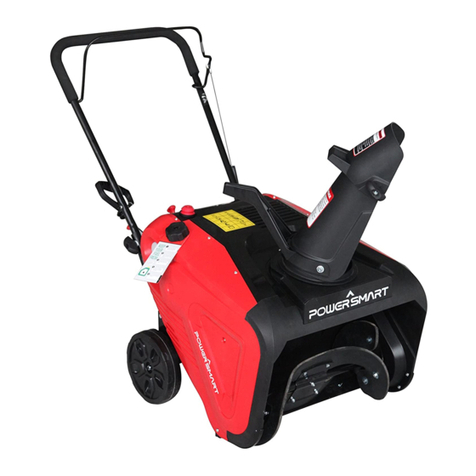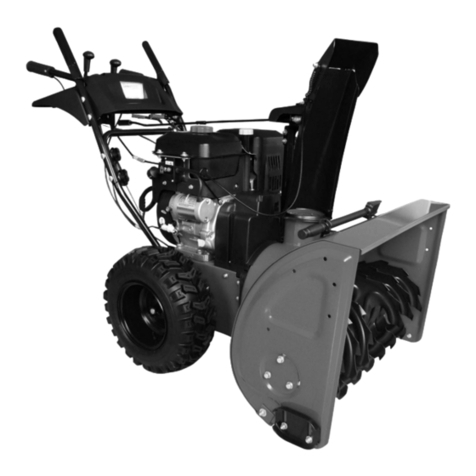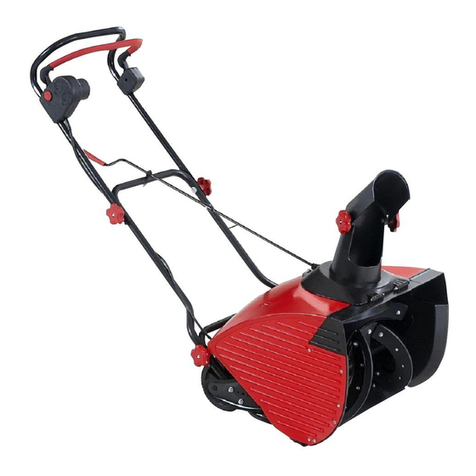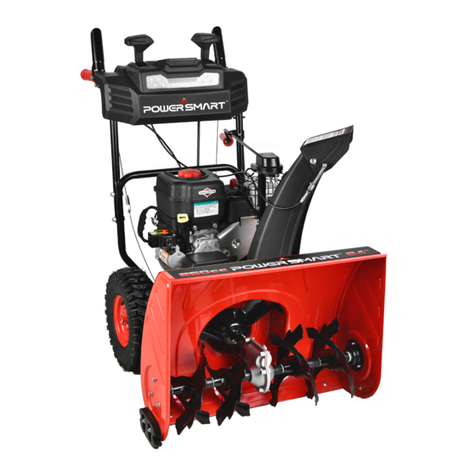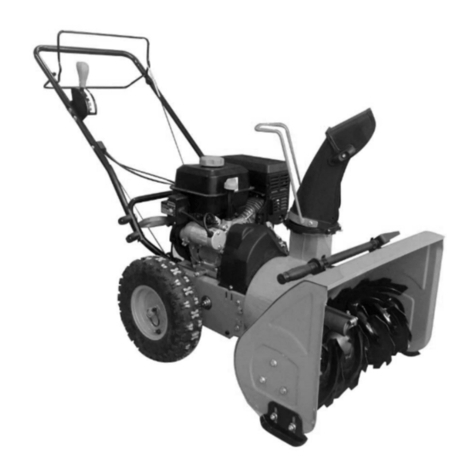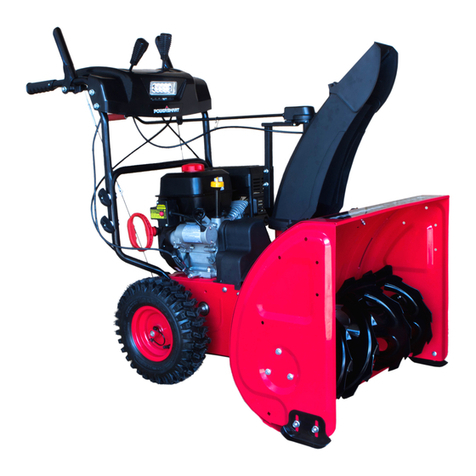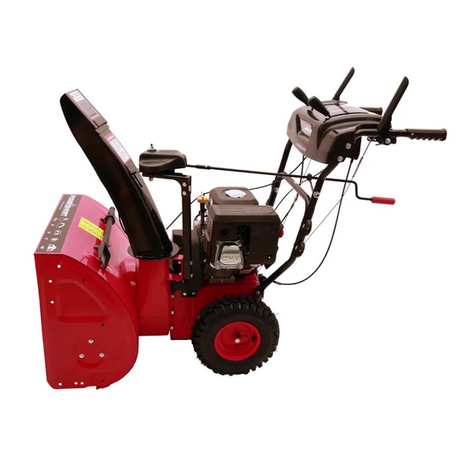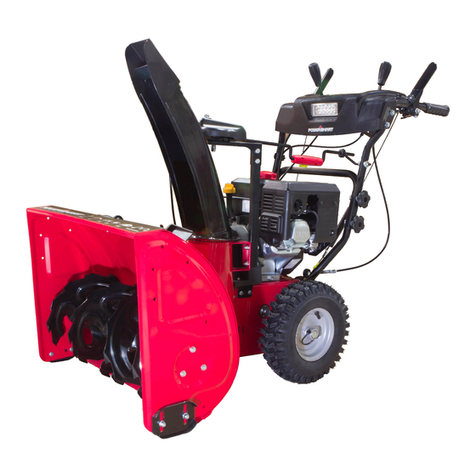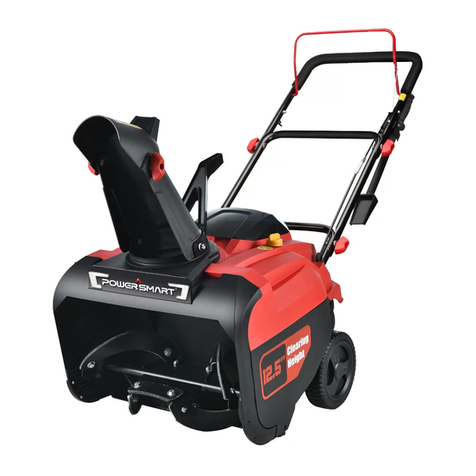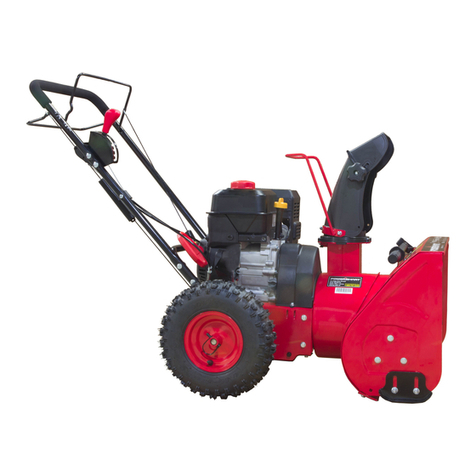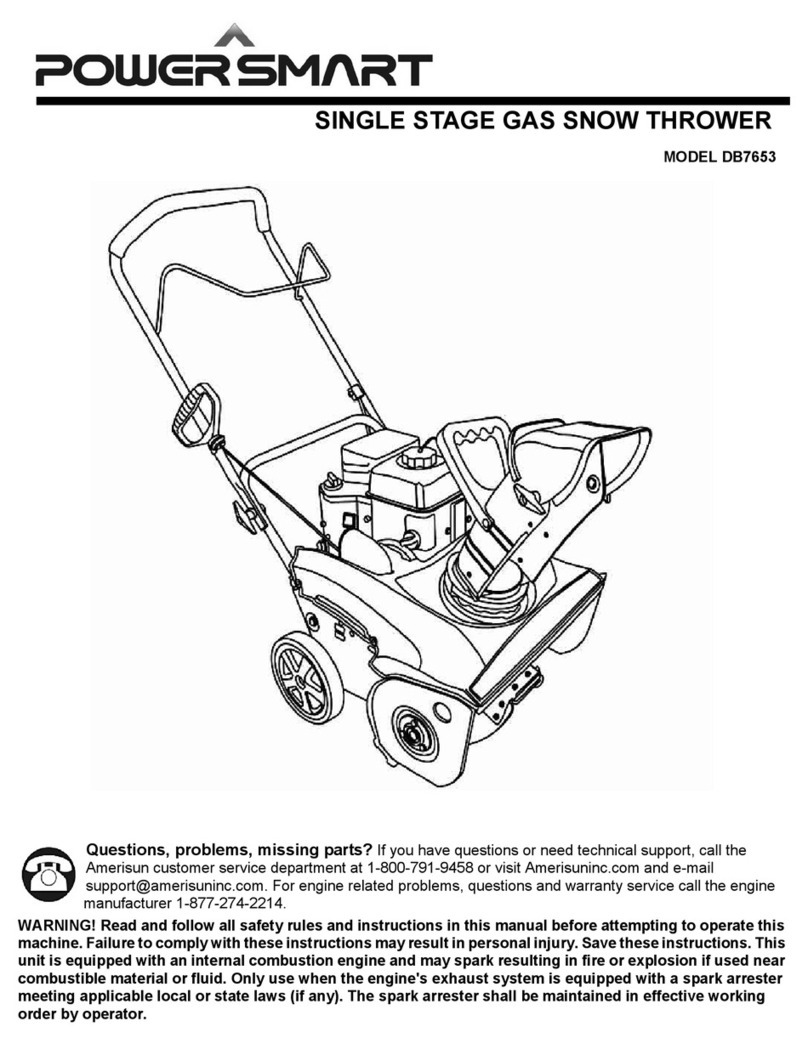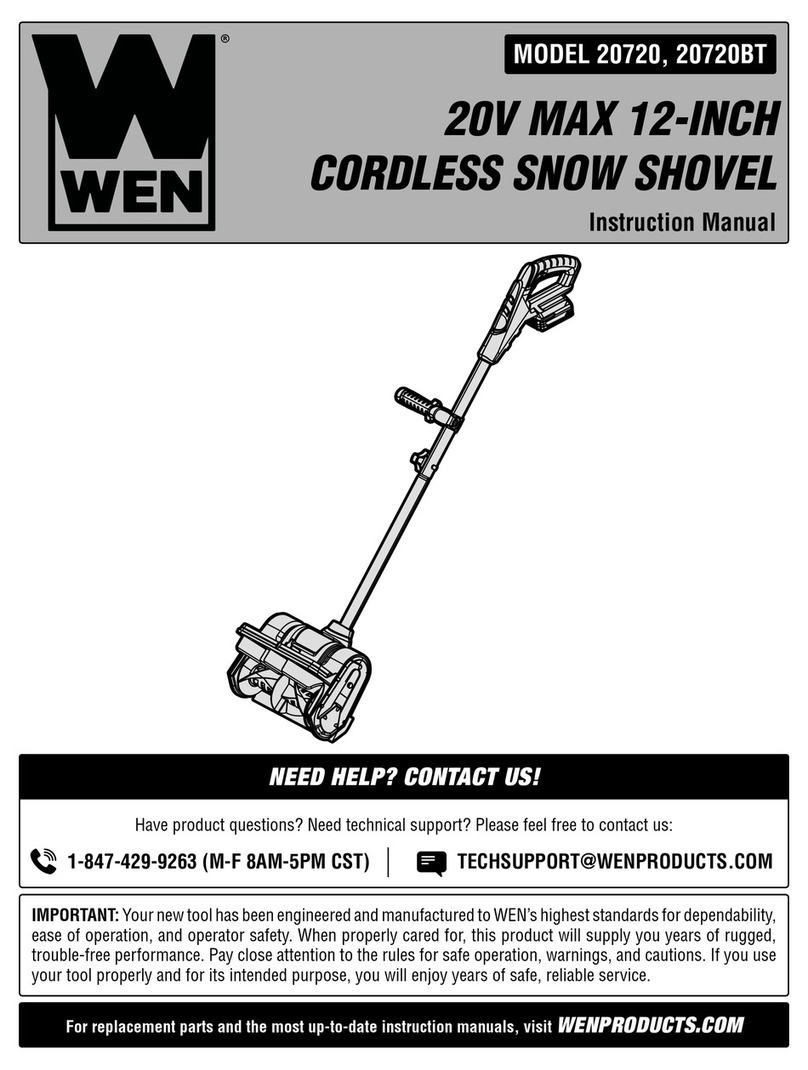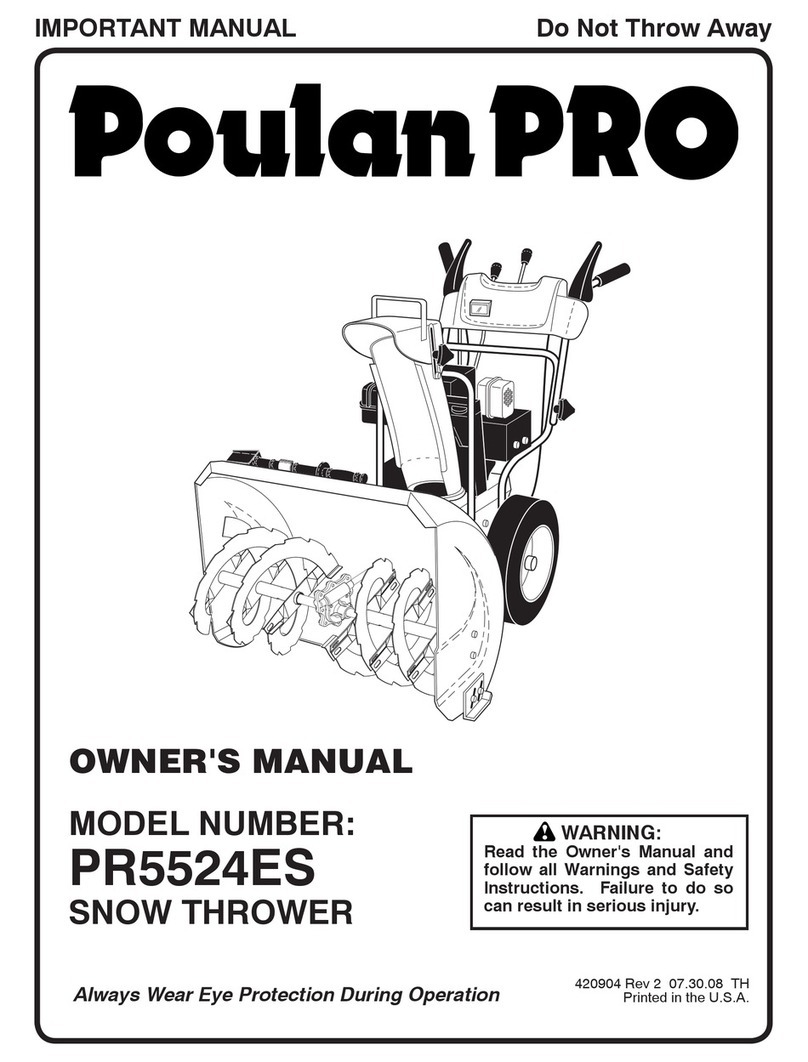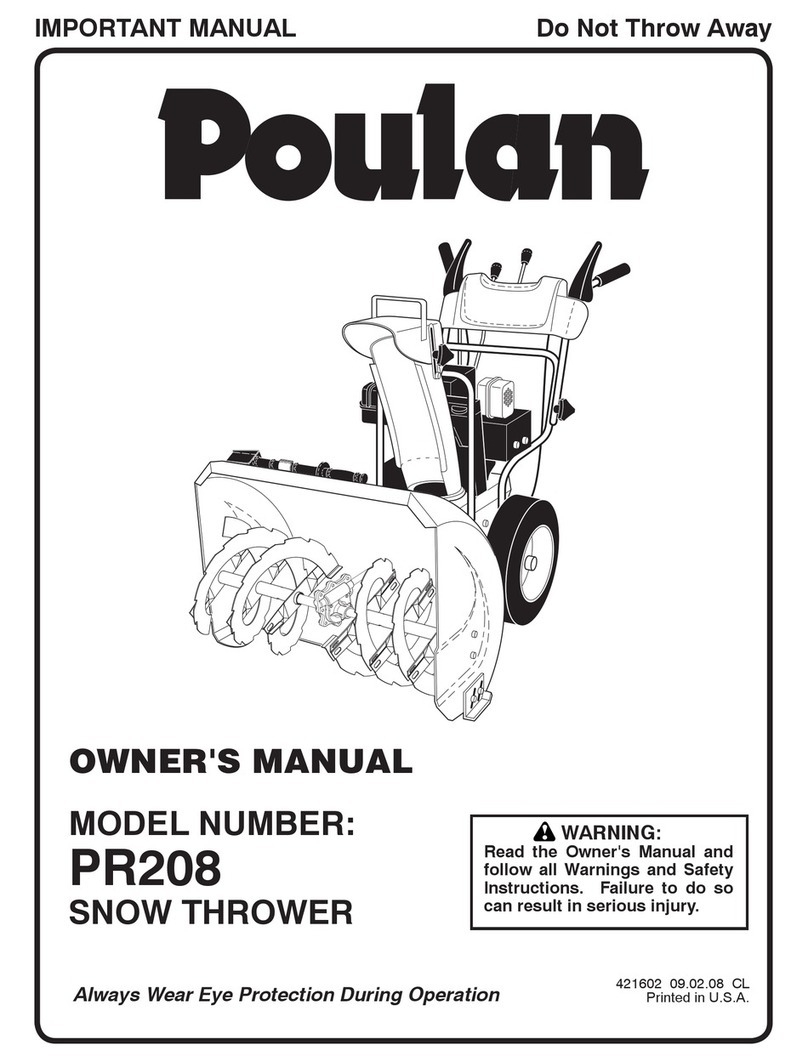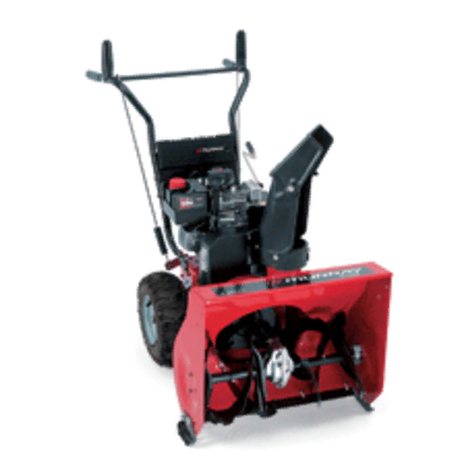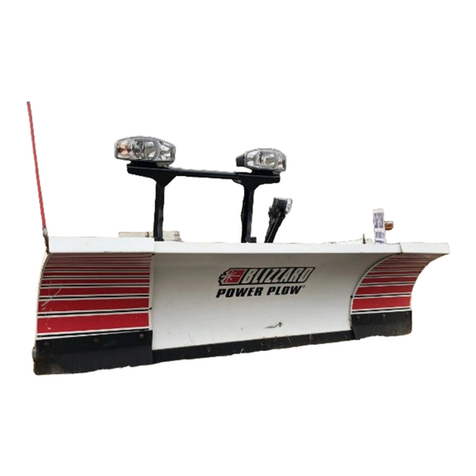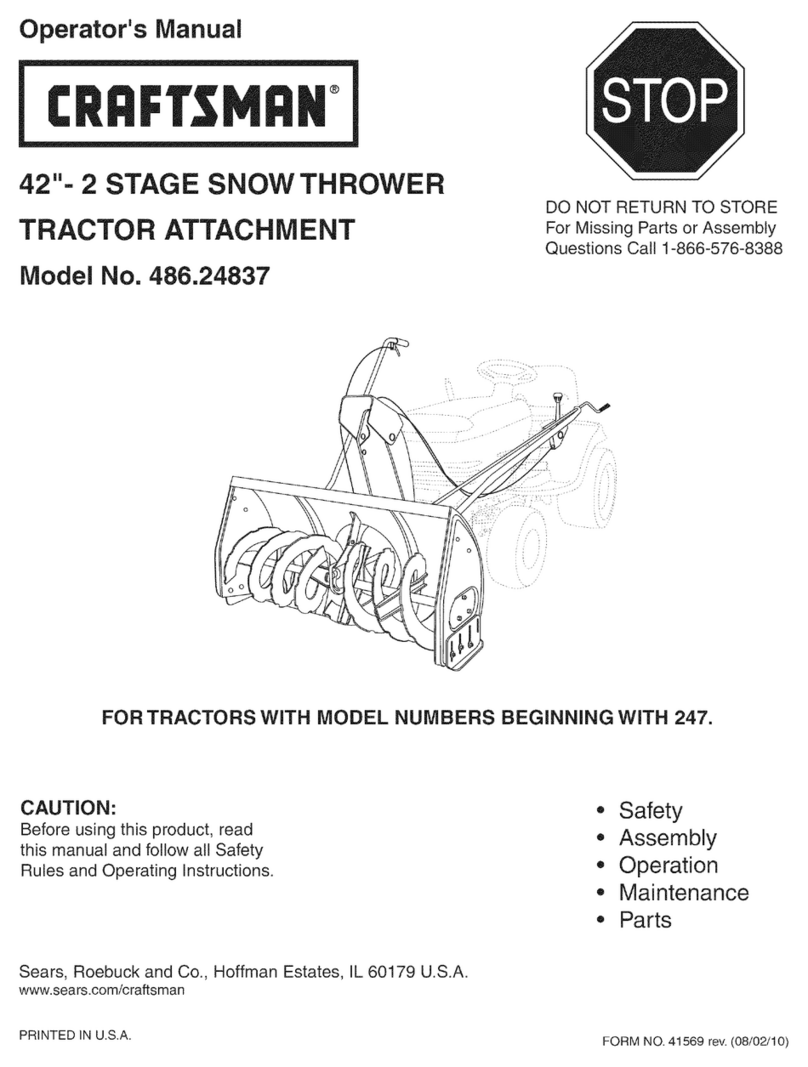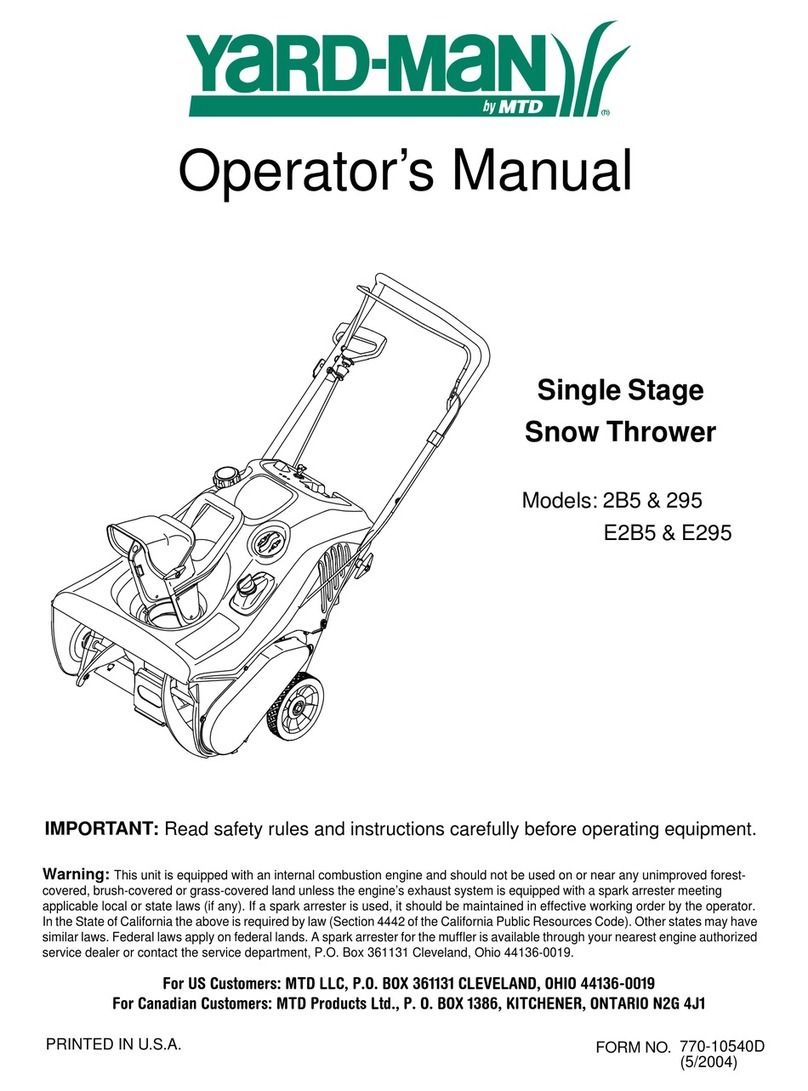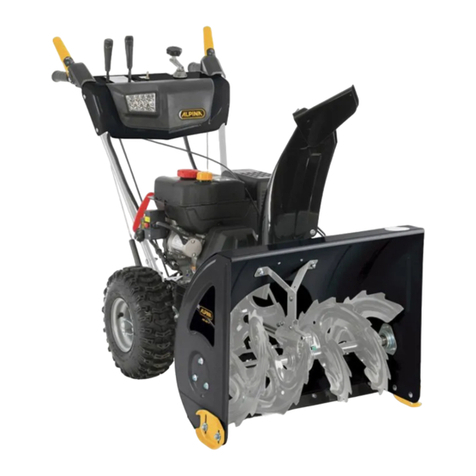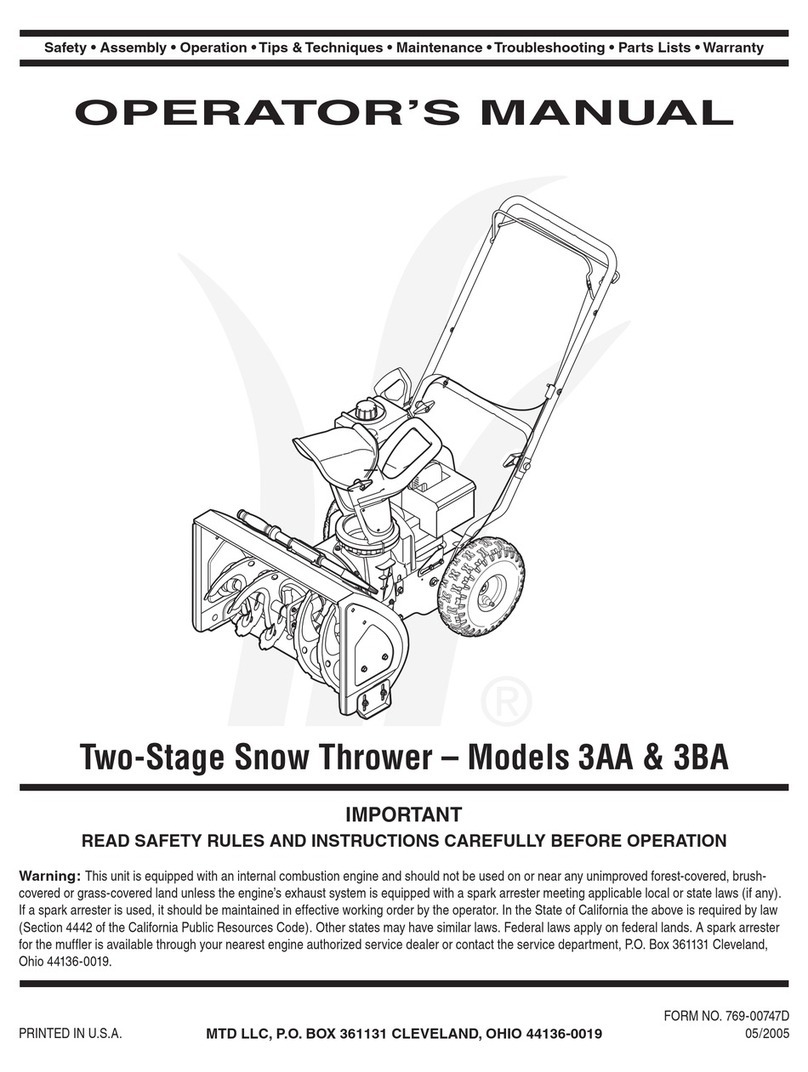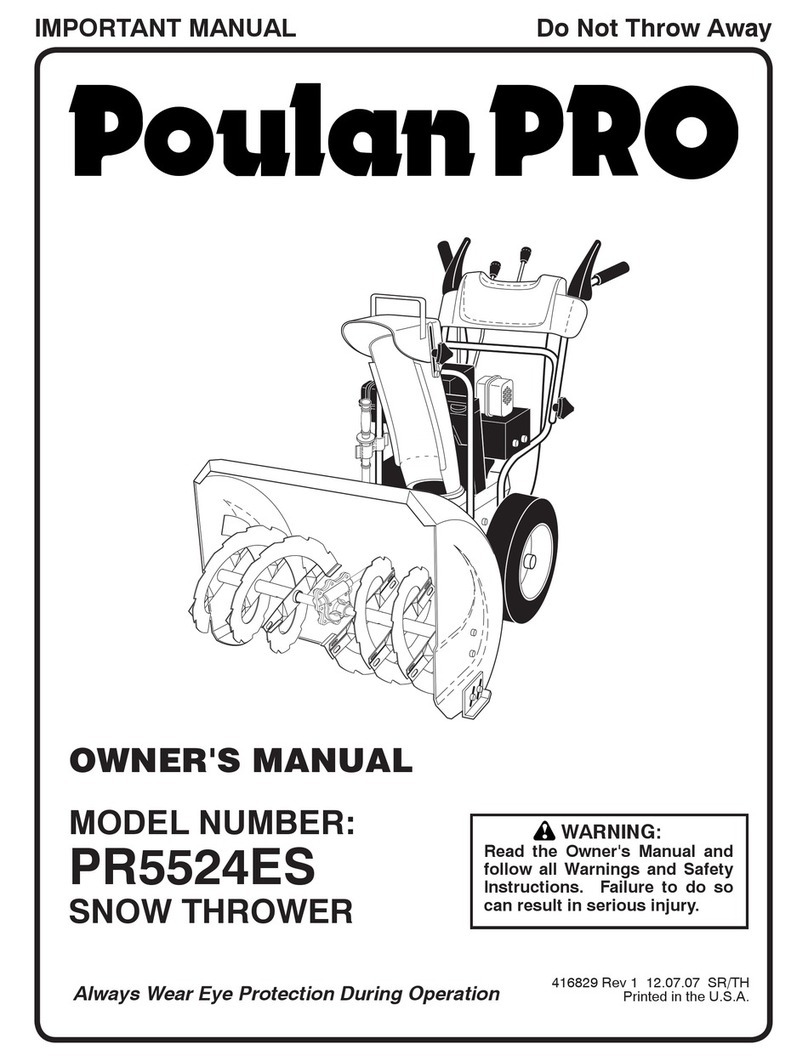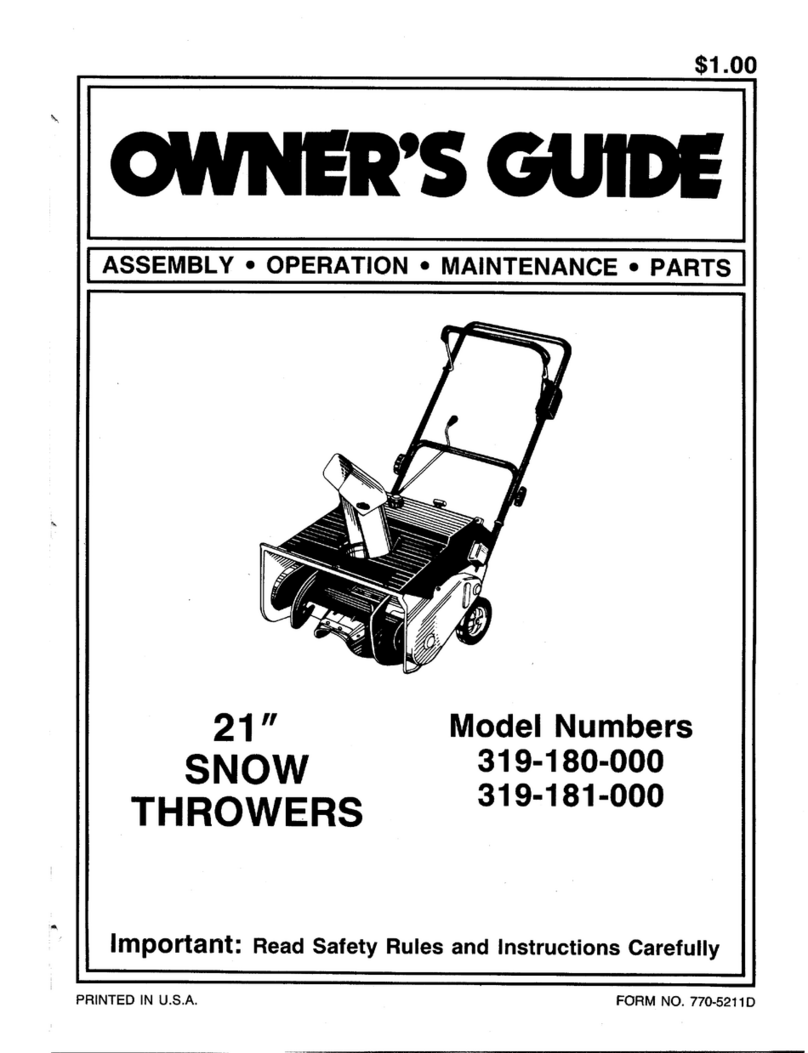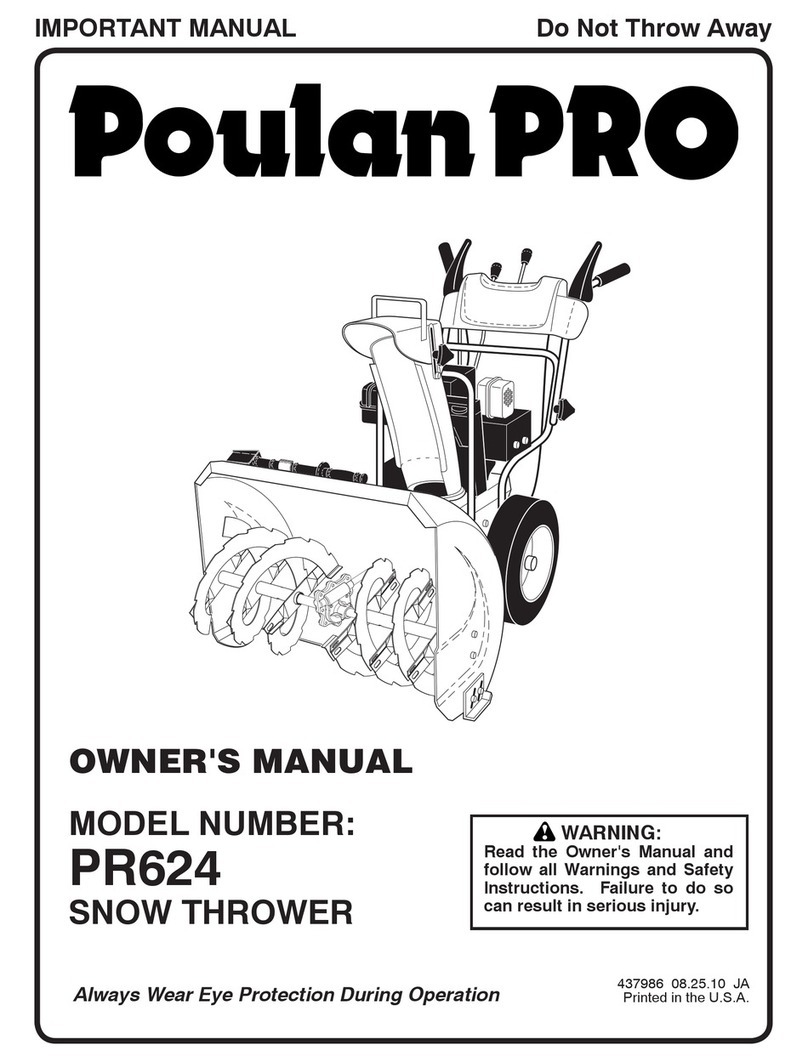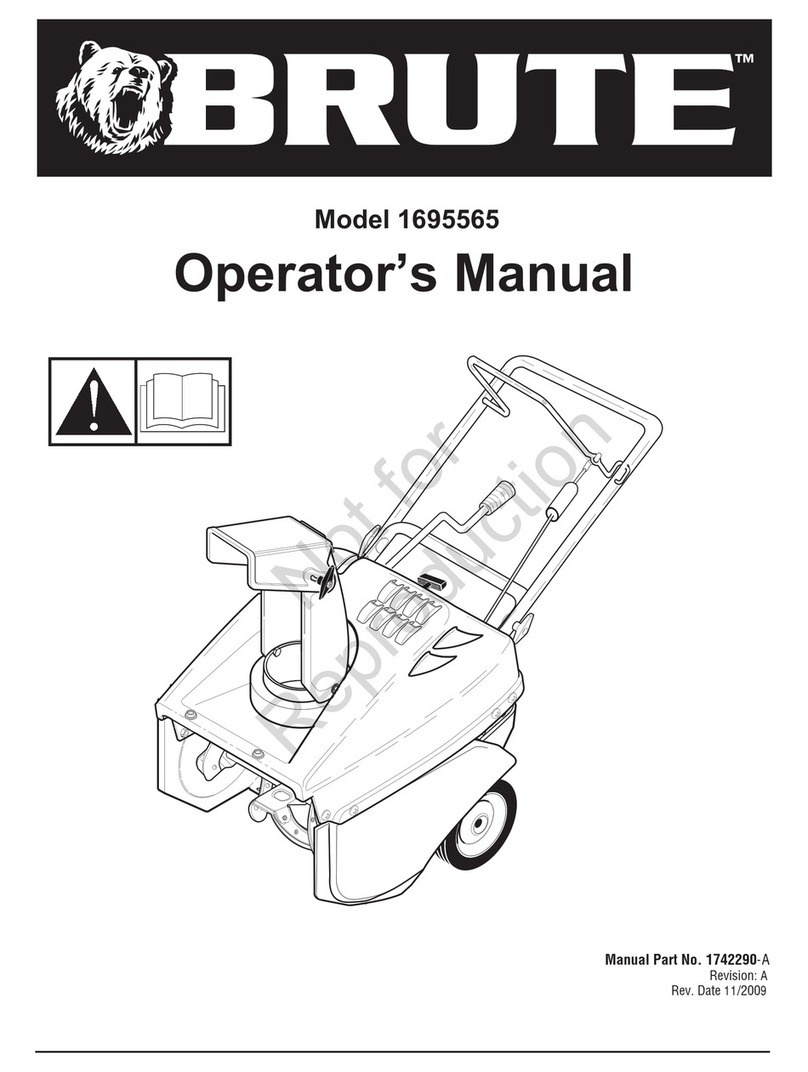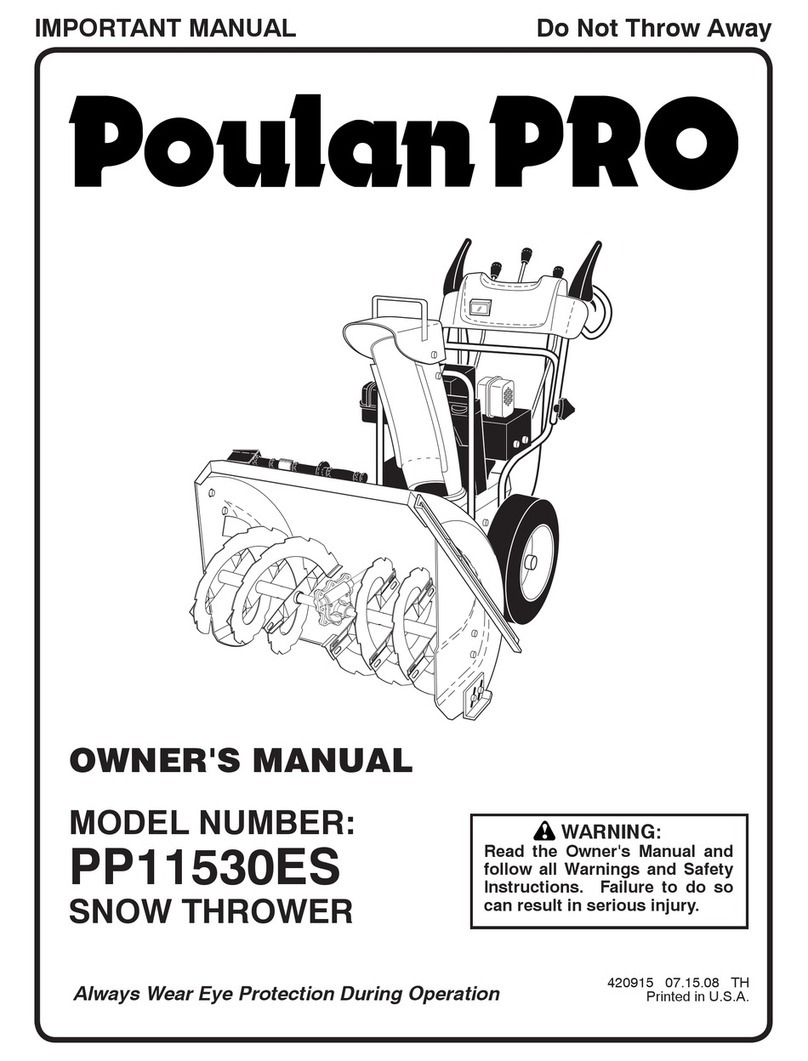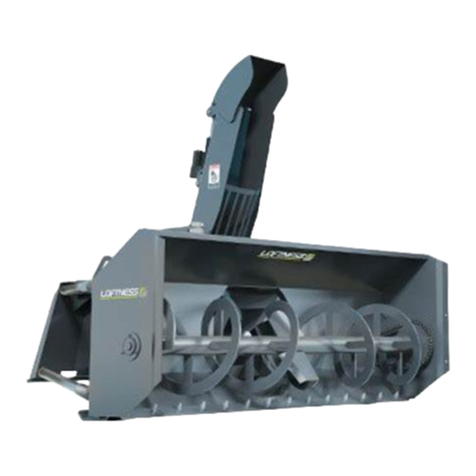
•
Wear
proper clothing-Wearing
mbber
boots offers additi_onal protection
f~m
electric shock.
Do
not
Wear
1
clothing
or
jewelry that may become caught in the machine. Wea~ protecttve headgear to keep hair away
fu)osc
revolving parts
of
the machine. Safety glasses ~ffer be~er protection than everyday eyeglas~es.
rn
• Moving parts present risks
-Keep
your face, hrur, clothing,
_hands,
an~ feet away from
_movmg
Parts.
All
guard
and safety attachments must be installed
pro~rly
before using the umt.
Shut
off
and disconnect cord before s
touching any parts other than handles and switch.
• Surfaces-This snow thrower is intended for use on paved surfaces. Do not use
?n
gravel,_ stone, or other
unpaved surfaces unless the snow thrower is adjusted for such surfaces according
to
the instructions given
in
the operators manual. . . . .
• Avoid accidental
starting-Make
sure the
s~tch
is in the
off
pos1t1on
before plugging m the unit. Do not
carry
the snow thrower with your finger
on
the switch. .
• Body position-Maintain proper footing and balance
at
all ttmes. Place heels finnly on the ground and tightly
grasp the handle bar. Watch for uneven surfaces
~d
do
not over reach. In case yo~ fall
or
collide with
the
snow
thrower, inspect the unit for damage. When steeping backwards. be careful to avoid obstacles beneath your
feet
or
behind you
to
avoid falling.
Snow Thrower
Use
and Care
• Know your snow blower-Familiarize yourselfwith the main
p~s.
of_your snow
thrower._
Read the operators
manual carefully. Learn your snow throwers applications and
'1m1tat1ons
as
well
as
spe_c1fi~
potential hazards
related to this machine. Do not use this machine for any purpose other than one for which
1t
was designed.
Otherwise. it may cause mechanical defaults, serious damage
or
personal injury.
• Preliminary unit inspection -Thoroughly inspect the unit before use.
M~e
sur~
~II
the parts are secure and
installed correctly.
If
you notice any abnormalities, do not use the machine until
~t
has been properly repaired.
Always perform a test run the first time you use the snow thrower
or
after replacing parts to ensure that unit
is
functioning properly.
• Preliminary area inspection-Clear the area to be plowed before each use. Remove all objects such as rocks,
broken glass, nails. wire,
or
string which can
be
thrown by
or
become entangled in the snow thrower.
Keep
the
area
of
operation clear
of
other people and pets.
• Excessive force -The snow thrower was designed to respond at a certain rate for various snow conditions
for
optimum safety band performance. Do not force it; keep pressure constant.
• Malfunctioning switch-Do not use the snow blower
if
the switch does not turn it on and off. Any electrical
appliance that can not
be
controlled by the switch is not safe to use and must be repaired.
• Hitting an object-Ifthe snow thrower accidentally strikes
an
object, stop the snow thrower. Inspect for damage;
repair
or
replace any damaged part before restarting and operating the snow thrower.
• Discharge chute safety -Never direct the snow discharge chute
at
the operator,
at
bystanders,
at
vehicles
or
at
windows. Thrown snow and foreign objects accidentally picked up
by
the snow thrower can cause serious
damage and personal injury. Do not use your hands to unclog the discharge chute. Stop the motor before
removing debris.
• Abnomial operation-Ifyou notice the snow thrower running in an unstable state
or
hear
abnonnal sounds
from
machine, stop the machine, disconnect the power immediately, and contact your original distributor.
• Noise control-When using the snow thrower, you must respect local laws and regulations regarding noise
control and environmental protection. To avoid noise disturbance, you should carefully decide upon an
appropriate operation time and consider the surrounding conditions.
• When work is completed -Disconnected the snow thrower from the power source when not in use, when
changing accessories, and before performing any maintenance.
• Store safety-Store snow thrower indoors in a dry area between uses. Keep in a locked area where children
and
unauthorized users can not gain access. Do not store the machine while it
is
still connected
to
the power
source.
It may cause damage and injury.
• Maintain for
s~~ty
and longevity-Check for misalignment
or
binding
of
moving parts, breakage
of
parts,
and
any other cond1t1ons that may affect the units operation.
If
damaged, repair
or
replace the damaged part
before
use. Use onl~ those_replacement parts made for your model. When replacing any parts, you must strictly
observ~ the instructions and_procedures des~ribed in this manual. Special care should be paid to any rubber
parts, smce these parts may increase the engme load and decrease its mechanical power
if
damaged.
4
